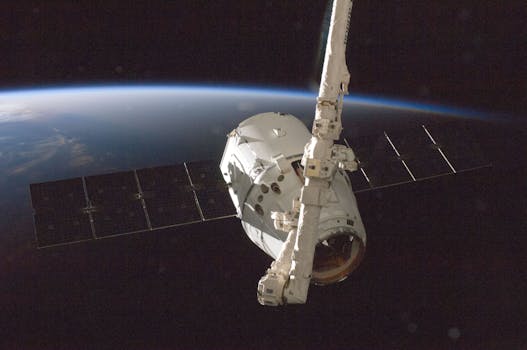
LEO satellites are changing the world of global connectivity, and WordPress is playing a significant role in this revolution. The Focus Keyword, LEO satellites, is the key to understanding this technology. LEO satellites are a type of satellite that orbits the Earth at an altitude of around 160 to 2,000 kilometers, which is much lower than traditional geostationary satellites. This lower orbit allows LEO satellites to provide faster and more reliable internet connectivity, making them ideal for a wide range of applications, including remote sensing, communication, and navigation.
One of the primary advantages of LEO satellites is their ability to provide high-speed internet connectivity to remote and underserved areas. Traditional satellite internet services often suffer from high latency and slow speeds, making them unsuitable for applications that require real-time communication. LEO satellites, on the other hand, can provide speeds of up to 1 Gbps, making them comparable to fiber-optic internet services. This has significant implications for areas where traditional internet infrastructure is lacking, such as rural communities, developing countries, and emergency response situations.
WordPress, the popular content management system, is also playing a crucial role in the development and deployment of LEO satellites. Many companies involved in the LEO satellite industry use WordPress to build their websites, manage their content, and provide updates to their customers. WordPress’s flexibility, scalability, and ease of use make it an ideal platform for companies looking to establish an online presence and communicate with their audience. Additionally, WordPress’s extensive range of plugins and themes makes it easy to customize and extend the functionality of LEO satellite-related websites.
How LEO Satellites Work
LEO satellites work by using a network of satellites in low Earth orbit to provide internet connectivity to users on the ground. The satellites are equipped with transceivers that communicate with user terminals, which are small dishes or antennas that connect to the internet via the satellite network. The user terminals send and receive data to and from the satellites, which then relay the data to and from the ground stations. The ground stations are connected to the internet backbone, allowing users to access online services and communicate with others around the world.
The LEO satellite constellation is typically made up of dozens or even hundreds of satellites, which work together to provide continuous coverage of the Earth’s surface. The satellites are designed to be small and lightweight, making them cheaper to launch and maintain than traditional satellites. This has led to a proliferation of LEO satellite constellations in recent years, with companies such as SpaceX, OneWeb, and Amazon’s Kuiper Systems launching thousands of satellites into orbit.
Applications of LEO Satellites
LEO satellites have a wide range of applications, from remote sensing and communication to navigation and climate monitoring. One of the most significant applications of LEO satellites is in the field of remote sensing, where they are used to collect data on the Earth’s surface and atmosphere. LEO satellites can be equipped with a variety of sensors, including cameras, spectrometers, and radar systems, which allow them to collect data on everything from crop health to ocean currents.
LEO satellites are also used for communication, providing internet connectivity to remote and underserved areas. This has significant implications for emergency response situations, where traditional communication infrastructure may be damaged or destroyed. LEO satellites can provide critical communication services, such as voice and data connectivity, to first responders and emergency personnel. Additionally, LEO satellites can be used for navigation, providing location-based services and precision timing to a wide range of applications, from aviation to finance.
Challenges and Opportunities
Despite the many advantages of LEO satellites, there are also significant challenges and opportunities that need to be addressed. One of the primary challenges is the issue of space debris, which is becoming an increasingly significant problem as the number of satellites in orbit grows. Space debris can pose a significant risk to operational satellites, as well as to the International Space Station and other crewed spacecraft.
Another challenge facing the LEO satellite industry is the issue of regulation and governance. As the number of satellites in orbit grows, there is a need for clear and consistent regulations to ensure that the satellites are operated safely and responsibly. This includes regulations related to frequency allocation, orbital slots, and debris mitigation, among others. The opportunity for WordPress and other content management systems is to provide a platform for companies and organizations to communicate with their audience and provide updates on their activities.
In conclusion, LEO satellites are revolutionizing the way we communicate and access information, and WordPress is at the forefront of this revolution. With their ability to provide high-speed internet connectivity to remote and underserved areas, LEO satellites have significant implications for a wide range of applications, from remote sensing and communication to navigation and climate monitoring. As the LEO satellite industry continues to grow and evolve, it is likely that we will see new and innovative applications of this technology, and WordPress will be there to support and enable these developments.



